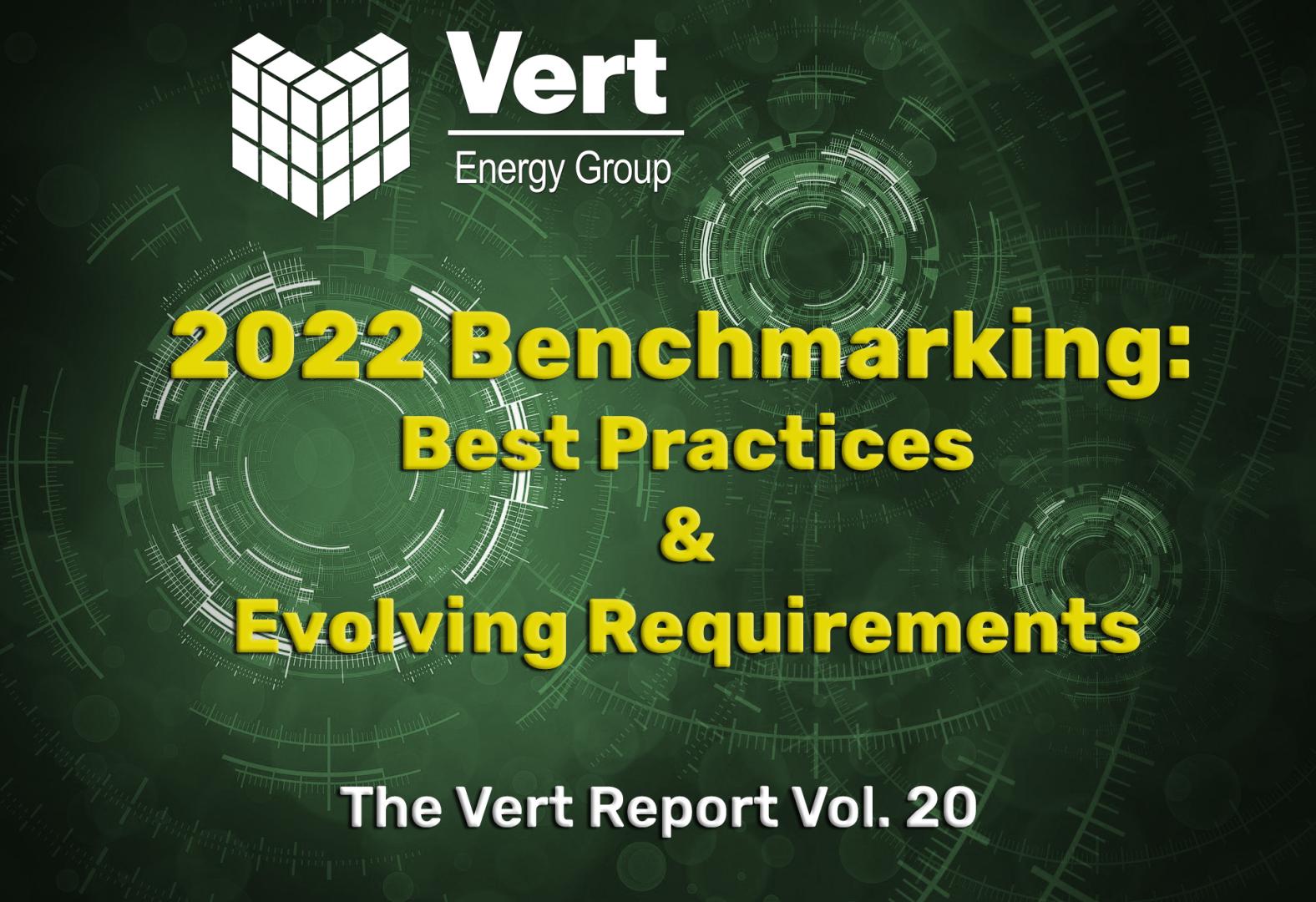As businesses across the world are looking for new ways to reduce their carbon footprint, renewable energy sources have become an increasingly attractive path forward.
Not only does investing in renewable energy allow companies to do their part for the environment by reducing emissions and saving non-renewable resources like oil, but it also holds several unique economic advantages that make it a wise financial decision as well.
In this post, we’ll dive into exactly how renewable energy can benefit your business, from lowering costs and increasing efficiency to improving employee morale and creating positive public perception of your organization. Read on to learn all about why investing in renewable energy makes smart business sense!
Basics Of Renewable Energy
Renewable energy is a cutting-edge technology transforming how we approach sustainability and protecting the environment. From solar farms to wind turbines, renewable sources of energy offer vast potential for reducing emissions, improving air quality and conserving natural resources.
By harnessing nature’s power, whether it be from the sun, wind or water, renewable energy systems provide clean and reliable electricity without generating harmful pollutants.
Innovative advances in this field have made significant strides in increasing efficiency while decreasing cost – making it an increasingly viable solution to traditional methods of energy production.
With a more conscious shift toward renewables, we can minimize our ecological footprint while harnessing the many advantages provided by this rapidly evolving industry.
Types Of Renewable Energies And What Are They Used For
There are many different types of renewable energies that are being used and explored today. These include solar, wind, hydropower, geothermal, and biomass energy.
Solar Energy

Solar energy is a viable renewable energy source that can power homes, businesses, and entire cities. By harnessing the power of sunlight and converting it into electricity, solar energy can bring significant economic benefits and contribute to global sustainability.
In addition to its economic benefits, this eco-friendly form of energy production can help reduce emissions, contribute to better air quality and even provide clean water in developing countries.
With these types of benefits, solar energy is an investment worth considering for anyone looking to save money while helping preserve our planet for generations to come.
Wind Energy
Wind energy is a powerful source of renewable energy that is already powering entire regions and economies across the world.
By harnessing the kinetic energy of the wind, wind turbines are able to generate electricity that can be used in an array of applications. The best wind resources are found in rural areas, such as ocean coasts and mountain ridges, with a steady flow of strong winds.
There, turbines efficiently convert the wind into mechanical power, which is then turned into electricity that can be used for various purposes, from providing individual homes with electricity to servicing entire cities.
Wind energy has rapidly become one of the fastest growing global clean energies and continues to revolutionize how mankind produces its much-needed electricity.
Hydropower
Producing electricity with the force of falling water almost sounds like something out of a fairytale. But that’s exactly what hydropower does – and it’s one of the most widely used sources of renewable energy today.
As the world attempts to reduce its dependence on fossil fuels and move towards a greener future, nations have come to recognize the potential in harnessing hydropower as an efficient and dependable energy source.
Simple yet effective turbines take advantage of naturally occurring waterfalls and rivers, transforming the kinetic energy into electricity that can be sent directly for use or stored later.
Advances in turbine technology mean that countries large and small can now access hydropower as a reliable electricity provider – from providing a full power grid to powering an individual home.
Hydropower shows no signs of slowing down: as we continue towards a bright renewable future, this clean energy source offers limitless possibilities.
Geothermal Energy
Using geothermal energy is an innovative and cost-efficient way to power homes, businesses and even entire cities. By channelling the natural heat from beneath the earth’s surface, we can tap into something that is truly renewable and sustainable.
Not only does this form of energy produce little or no emissions, but it can also provide heating systems with a constant source of hot water – making geothermal energy significantly lower on both operation and maintenance costs.
Moreover, geothermal energy is also exceptionally reliable because temperature below the surface tends to stay constant throughout the seasons. All in all, these factors make it clear why geography plays such a central role in taking advantage of this renewable energy source – one which will become increasingly utilised as people seek ways to reduce their environmental footprint while still having access to 24/7 electricity supply.
Biomass Energy
Biomass energy is a clean and renewable electricity source with great potential benefits. These include using renewable resources like wood, crop residues, manure, and other biological materials that can be used to generate electricity and for heating and cooling applications.
This form of energy promotes energy security for a region or country and provides economic development opportunities due to the value of bioproducts created in the production process. Furthermore, biomass energy helps reduce carbon emissions from burning fossil fuels, making it an attractive and sustainable solution for the entire world.
All of these types of renewable energies have different advantages and disadvantages. Solar energy is one of the most widely used forms of renewable energy due to its abundance, cost effectiveness, and lack of greenhouse gas emissions.
Wind energy is also gaining popularity due to its ability to generate large amounts of electricity with relatively little environmental impact. Hydropower, geothermal energy, and biomass energy are all more expensive than solar or wind but can provide reliable sources of energy as well.
Benefits Of Renewable Energy Technologies
 Utilizing solar panels and other renewable energy technologies are becoming increasingly popular to create clean and green energy that can significantly reduce energy bills. In fact, solar systems can generate solar power with no emissions or pollutants, while natural gas is still considered a cleaner alternative to electricity generated by fossil fuels.
Utilizing solar panels and other renewable energy technologies are becoming increasingly popular to create clean and green energy that can significantly reduce energy bills. In fact, solar systems can generate solar power with no emissions or pollutants, while natural gas is still considered a cleaner alternative to electricity generated by fossil fuels.
Furthermore, governments worldwide have begun offering green energy incentives – such as solar rebates – to those investing in solar installation or renewable energy technology. With such financial incentive policies in place, now might be the right time to start thinking about switching to solar.
Things To Consider When Using Any Renewable Energy Form
When it comes to using any form of renewable energy, there are several things to consider. First and foremost, global warming emissions should be taken into account. Renewable energy sources will drastically reduce the global warming emissions that come from burning fossil fuels for energy production compared to traditional sources like coal and oil.
Additionally, renewable energy sources are becoming increasingly affordable, meaning that people have more access to cleaner and greener forms of energy; this has the potential to significantly drive down global energy prices if utilized on a global scale.
Lastly, when deciding whether or not a particular renewable source is suitable, its availability must also be considered. Different areas around the world may have greater access to certain types of renewable energy than others based on factors such as seasons or geography. All these details should be considered when deciding which type of renewable energy form is appropriate for your needs.
The Final Verdict
Renewable energy has a lot of benefits for businesses. It can help them save money, reduce their carbon footprint, and become more sustainable. If you’re interested in learning more about how your business can benefit from renewable energy, contact Vert Energy Group today. We specialize in helping businesses switch to renewable energy sources and would happily answer any of your questions.





 Building Upgrade Projects are key to improving the features and condition of your commercial building, which significantly influences its value. While many building owners put off needed repairs or improvements, properly maintained properties will always be in demand and command higher prices. By making strategic upgrades, you not only add value to your property but also make it more attractive to potential buyers or renters. Examples of such upgrades are Gas Line Inspections or Repairs, Seismic Retrofitting, Solar Panels or Green Roof Installations, Parking lot Updates, and Building Management Systems.
However, it is important to be aware of the pitfalls and plan accordingly. By doing so, you can ensure that your project is a success and that your property maintains its high market value. Communication, Budgeting, Resourcing, Due Diligence, Coordination, and Contract Preparation are all common errors made during Capital Improvement projects which can be costly and time-consuming. In our new VPU webinar, and in the table below, we discuss these common pitfalls further.
Building Upgrade Projects are key to improving the features and condition of your commercial building, which significantly influences its value. While many building owners put off needed repairs or improvements, properly maintained properties will always be in demand and command higher prices. By making strategic upgrades, you not only add value to your property but also make it more attractive to potential buyers or renters. Examples of such upgrades are Gas Line Inspections or Repairs, Seismic Retrofitting, Solar Panels or Green Roof Installations, Parking lot Updates, and Building Management Systems.
However, it is important to be aware of the pitfalls and plan accordingly. By doing so, you can ensure that your project is a success and that your property maintains its high market value. Communication, Budgeting, Resourcing, Due Diligence, Coordination, and Contract Preparation are all common errors made during Capital Improvement projects which can be costly and time-consuming. In our new VPU webinar, and in the table below, we discuss these common pitfalls further.



 Search by Zip to Find Applicable Energy Laws
Search by Zip to Find Applicable Energy Laws

 Under NYC Local Law 11 (LL11), all buildings with six or more stories must undergo an inspection of the exterior walls and appurtenances every five years. This inspection falls under the city’s Façade Inspection and Safety Program, or FISP, which aims to improve public safety by identifying potential problems with building exteriors. During the inspection process, a licensed professional will examine a wide range of material and structural features on the building envelope. These may include windows, doors, masonry, and cladding materials, as well as waterproofing membranes and rooftop vents. The overall goal of FISP is to help ensure that New York buildings are safe and structurally sound while minimizing any potential risks to the property and its occupants. If any issues are identified during the inspection process, they will be flagged so that they can be promptly addressed by qualified contractors.
Failure to comply with LL11 will result in civil penalties issued by the New York City Department of Buildings (NYCDOB). In extreme cases, NYCDOB can revoke a building’s Certificate of Occupancy and force it to be closed if it is not in compliance with LL11 as the building will be deemed unsafe. There are four different civil penalties you can receive:
Under NYC Local Law 11 (LL11), all buildings with six or more stories must undergo an inspection of the exterior walls and appurtenances every five years. This inspection falls under the city’s Façade Inspection and Safety Program, or FISP, which aims to improve public safety by identifying potential problems with building exteriors. During the inspection process, a licensed professional will examine a wide range of material and structural features on the building envelope. These may include windows, doors, masonry, and cladding materials, as well as waterproofing membranes and rooftop vents. The overall goal of FISP is to help ensure that New York buildings are safe and structurally sound while minimizing any potential risks to the property and its occupants. If any issues are identified during the inspection process, they will be flagged so that they can be promptly addressed by qualified contractors.
Failure to comply with LL11 will result in civil penalties issued by the New York City Department of Buildings (NYCDOB). In extreme cases, NYCDOB can revoke a building’s Certificate of Occupancy and force it to be closed if it is not in compliance with LL11 as the building will be deemed unsafe. There are four different civil penalties you can receive:
 Memorial Day falls on May 30th this year. This American holiday began in the years following the Civil War to remember and honor the brave men and women who have given their lives in service to our country. It is a day of somber reflection, but also of celebration and thanksgiving. Over the years Memorial Day traditions have evolved. Originally, people would observe the holiday by decorating the graves of fallen soldiers and it grew into local and national celebrations with parades. With many offices and companies closed on Memorial Day, this holiday has become more of a long weekend referred to as “Memorial Weekend.” It serves as an opportunity for many to take a weekend trip or host parties in what National Today states is a way “to balance out the soberness of the day and welcome summer.” Whether you’re staying in or taking a trip this Memorial Day, take a moment to pay tribute to honor the brave men and women who have given their lives in service to our country.
Memorial Day falls on May 30th this year. This American holiday began in the years following the Civil War to remember and honor the brave men and women who have given their lives in service to our country. It is a day of somber reflection, but also of celebration and thanksgiving. Over the years Memorial Day traditions have evolved. Originally, people would observe the holiday by decorating the graves of fallen soldiers and it grew into local and national celebrations with parades. With many offices and companies closed on Memorial Day, this holiday has become more of a long weekend referred to as “Memorial Weekend.” It serves as an opportunity for many to take a weekend trip or host parties in what National Today states is a way “to balance out the soberness of the day and welcome summer.” Whether you’re staying in or taking a trip this Memorial Day, take a moment to pay tribute to honor the brave men and women who have given their lives in service to our country.




 Ready to be pranked? Whether you’re pranking or being pranked, there’s no shortage of tricks to be found every April Fools – especially with big companies joining in the fun. From a company standpoint, April Fools is a great way to get your target audience involved and at your door in a fun way. One example would be the 1998 Burger King ad for the “Left-Handed Whopper.” Though diners couldn’t purchase the “Left-Handed Whopper” it nonetheless got them to Burger King where they most likely purchased another meal instead. Like any prank though, companies should be careful about their execution of it. Google is notorious for its participation in April Fools – a throwback to when they let us play Ms. Pac-Man on Google Maps in 2017 – not all have landed well. In 2016, Google’s prank left many users unhappy. The prank involved a new Gmail button – “
Ready to be pranked? Whether you’re pranking or being pranked, there’s no shortage of tricks to be found every April Fools – especially with big companies joining in the fun. From a company standpoint, April Fools is a great way to get your target audience involved and at your door in a fun way. One example would be the 1998 Burger King ad for the “Left-Handed Whopper.” Though diners couldn’t purchase the “Left-Handed Whopper” it nonetheless got them to Burger King where they most likely purchased another meal instead. Like any prank though, companies should be careful about their execution of it. Google is notorious for its participation in April Fools – a throwback to when they let us play Ms. Pac-Man on Google Maps in 2017 – not all have landed well. In 2016, Google’s prank left many users unhappy. The prank involved a new Gmail button – “




